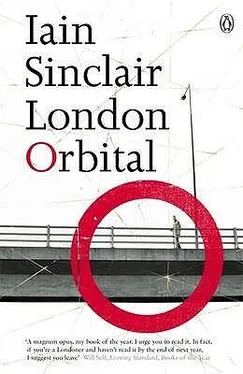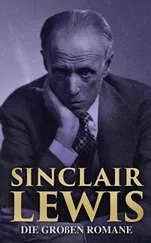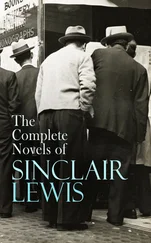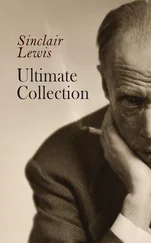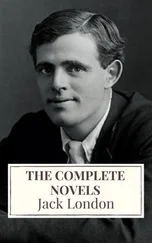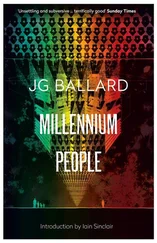Chafford Hundred thrives because it is not really there. It’s displaced, not placed: 2,000 (and rising) pristine, anti-vernacular units. Scimitar-shaped Draylon-grass carpets. Second cars. An empty-by-day enclave with no centre and no purpose. Chafford Hundred, as English as one of Prince Charles’s model villages, is actually bad-weather California: compulsory democracy, the flag (of the developer), total absence of that inner-city ethnic stew. As we walk away, we are overtaken by a white stretch-limo packed with kids on a birthday outing — to Bluewater?
The satellite estates around Grays are as much about repossession as possession. In the early Nineties’ property slump, late-Thatcherite speculators caught a cold. Ready-cash sharpies (from Deep Essex and London) picked up houses for around £ 80,000. Now, five and six bedroom properties start at £ 310,000. Journalist Nick Curtis, reporting for the Standard , claimed that there was nothing to do in Chafford — except have babies, rent videos, and watch more houses being built.
As we follow the sweep of the broad Thames, the riverbank evolves into what I call: Dracula’s Garden. Plants have had the juice sucked out of them, they’ve swallowed the filth brought in on the tide. They’ve stood up to wind, acid rain, the noxious perfume of the soap factory! And they’ve thrived. Mutated. Treated toxic infusions as growth hormones. Teasels look like spiky hand grenades. Lurid mosses lurk between the stone blocks of the embankment. Tyres, left in the mud, become rock pools. A lovely, lapping tidemark of oil, thick as elephant skin. Abandoned shopping trolleys act as trellises for weeds and rubbery marine growths. Couch grass breaks through a tarpaulin topsoil. Oil is the blood of the place. Oil and its antidote, soap.
Dominating the path to the headland, to Stoneness Lightbeacon, is Dracula’s Castle (aka Procter & Gamble’s bone-boiling detergent factory). You breathe soap, blow bubbles as you walk. Small pale flowers, meadow saxifrages, have been bleached blue. They’ve taken the additives and bloomed. A vibrant ecology of compromise has developed along the shore, in the shelter of the hot castle walls, under the pall of perfumed steam.
The factory has been assembled from Vorticist limbs, cylinders, chimneys bolted together. It’s all about circulation: hiss, rattle, whistle, crunch. Then storage. Windowless units with steel-grey walls. The industrial icebergs of Thurrock drift towards the Queen Elizabeth II Bridge. Thousands of tons of soap powder waiting to be shipped out. The most austere warehouse/tank has been sited so that the rising sun casts the shadow of the Procter & Gamble smokestacks across a colour-graded screen: a cinema of morning. This great downriver art work has been painted in four bands: dark blue (for the river), lighter blue, metallic grey, to the pearly haze of the sky. Meteorological minimalism. Constable’s cloud studies revisioned as a child’s building block.
It was easy to miss, but the Canning Town veteran, sucking on his single tooth, put us right. Follow the roughcast wall with the product placement graffito — PERSIL WHITE POWER — to the chalked Maltese cross (with inset swastikas); then turn north, pick up the path through the thicket of thorns. The block building is your target, two bands of colour poking above the trees. Ash, elder, bramble. Chickweed, mallow, sorrel. Nettles, wild carrot, ivy. A deep-green abundance through which we hack: towards the restored (by largesse of Procter & Gamble) twelfth-century church of St Clement’s, West Thurrock.
The freakish conjunction of church, block warehouse, factory has us spinning. That a building used by Canterbury pilgrims, a river crossing, should have survived. A major portion of the money required for restoration came from an unlikely source: the makers of Four Weddings and a Funeral. West Thurrock is not a backdrop I would have associated with Hugh Grant and Simon Callow. I checked the video. There it was. Dead Callow, resurrected Auden. Establishing shots from the high ground, a glimpse of the bridge. A melancholy walk, after the ceremony, to the riverside. Most of the magic of the place, mercifully, was elided. Actorly business, in English films, pulls rank on location. The facility fee was earned without evidence of the director (or the crew) seeing what was here, a strange geometry of unconnected elements. The knowledge that Thurrock had any meaningful existence before the arrival of the catering vans.
We met a Procter & Gamble gardener in the church grounds, a man in overalls who was prepared to let us in. The graveyard was a sanctuary for wildlife (and lowlife). We did the tour: saw the outsize headstones of the Essex giants and the memorial to the boys from the training ship Cornwall — who were buried in a mass grave in 1915, after going down, in a rowing boat disaster, off Purfleet. We admired the Roman brick courses, the evidence of a circular building, discovered on the south side of the present tower.
Renchi pounced: our old friends the Knights Templar. Only four round churches remained in England, so our guide informed us: the Temple Church (off Fleet Street), the Church of the Holy Sepulchre in Cambridge, a church in Northampton and another at Little Maplestead, Essex. We listened to his pitch, nodding over the tiles (Roman sesquipedalia). Hospitallers and Templars guarded pilgrim routes. Without question, they had been active in this area.
The lid of a large tomb was cracked, the gardener lifted one section: junkies kept their gear inside. Kids from Thurrock and Purfleet haunted the burial ground, smacked out of their heads, sleeping against the church walls. Or, if the rain came in from the river, in a convenient sepulchre. Stanley Spencer’s The Resurrection, Cookham reworked by Wes Craven.
The headstone of Robert Lee commemorated a man ‘who died in the accident of a pistol in the twinkling of an eye’. Bram Stoker’s Dracula, respectful of vampire lore, took shelter in a suicide’s grave.
Alabaster effigies, inside St Clement’s, were chilled: chipped profiles, sliced skulls. The pilgrim route was good business. Crossing water called for risk premiums, offerings, prayer. Fear is the surest source of patronage: fragments of medieval glass, illuminated by a press-switch, featured a voyage through Hell’s Teeth — from the cult which followed the 1348 outbreak of bubonic plague. The Black Death. A crowned bear rattling a money bag.
St Clement’s, West Thurrock, was one of the river’s great secrets. Without the old man in Grays, we would have missed it. I had missed it on previous walks; climbing the river wall to photograph stacks of Portakabins, then carrying on towards the Queen Elizabeth II Bridge. But gaining access to the church, touching alabaster flesh, experiencing forgotten plagues as brilliantly coloured shards of glass, confirmed my instinct. A residue of Count Dracula was still earthed in Purfleet .
Vampire scholars, such as Kim Newman, have always recognised that yesterday’s Undead are today’s asylum seekers, the Undispersed. The slow-detonating impact of Stoker’s 1897 fiction came, not from its novelty, but from the sense of the book as an original rewrite, the recapitulation of a recurring fable. Beneath the breastbeating Shakespearean echoes (cod-Irving), and the tent-show religiosity, is a considered and accurate geography. Westwards: Transylvania to Whitby. The Gothic imagination invading — and undoing — imperial certainties of trade, law, class. Dracula announces the coming age of the estate agent. Nothing in the book works without the Count’s ability to purchase, rent, secure property. Like the Moscow Mafia buying into St George’s Hill (proximity to Heathrow), Dracula chose Purfleet, alongside the Thames, so that he could ship out for Varna at a moment’s notice. Being an immortal, the Count knew that he only had to hang on for a few years and he would have a bridge across the river, a motorway circuit around London: new grazing grounds. The future M25 was a magic circle, a circle in salt. The Vampire couldn’t be excluded, he was already inside! Purneet rather than Thurrock. The motorway was the perfect metaphor for the circulation of blood: Carfax Abbey to Harefield — with attendant asylums. Stoker predicted the M25, made its physical construction tautologous. The Count’s fetid breath warmed Thatcher’s neck as she cut the ribbon.
Читать дальше
